By Dan Weisz
One of the neighborhood Cooper’s Hawks has been visiting my yard regularly these days. It is not looking for food and chasing birds, although they do scatter quickly when they see it arriving. The Cooper’s comes in to quench its thirst and not in search of a meal. While it is at the water’s edge, it keeps looking around to ensure it isn’t surprised by a predator or competitor. It will look around, then drink, then look around again, and then drink again, and so on.
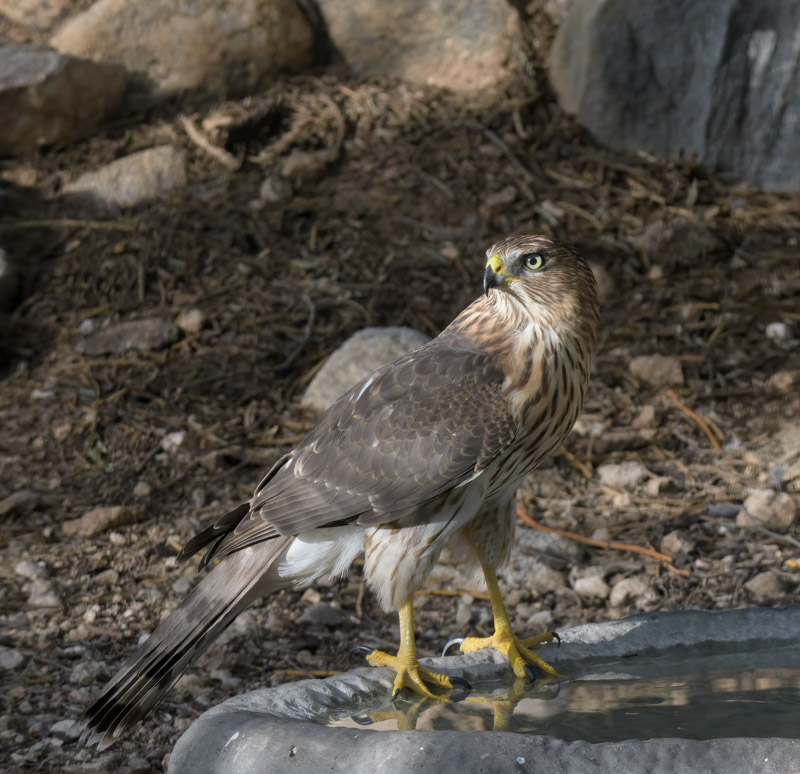
This seems to be a large Cooper’s Hawk so I imagine it is a female. Although it still has the vertical streaking on its breast that immature Cooper’s have, I believe this is a bird that hatched last summer due to its yellow-ish iris and the beginning of gray feathers on its back. It is called a sub-adult at the age of one year+ and is waiting to complete the molt into full adult plumage. This bird also appears to have an enlarged crop (the bulge at the front of its throat) so it likely ate very recently.
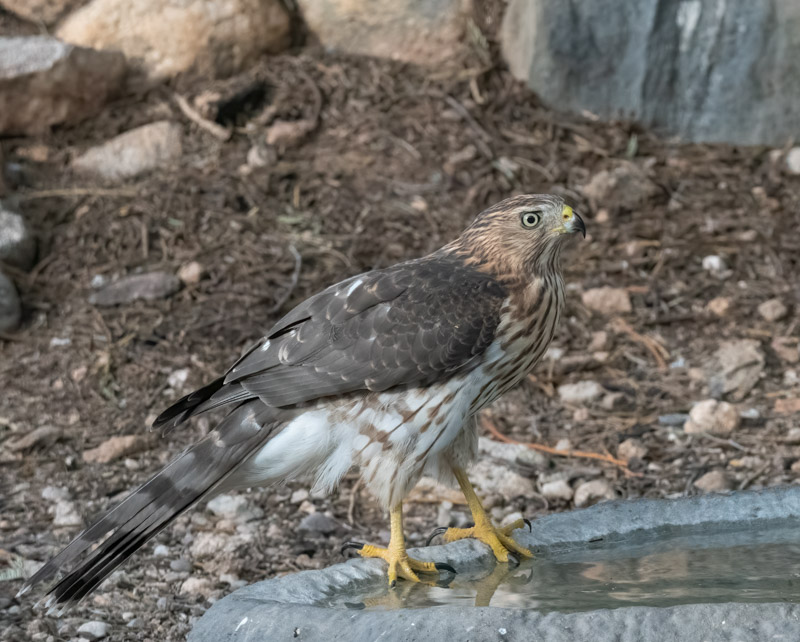
I thought it was going to expel a pellet here to empty the crop of indigestible things but after a few seconds the hawk resumed drinking.
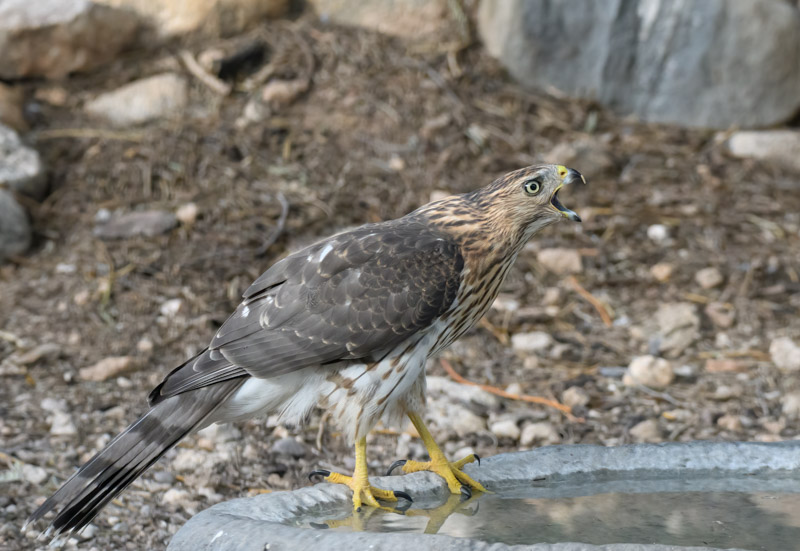
A close-up shows that the Cooper’s Hawk has a dried mesquite leaf on the tip of its beak. The water feature is right below a mesquite tree so it will fill with mesquite leaves and debris regularly. I use a fish net to clean out the debris when I can but I can’t keep it completely clean at all times. Reminds me of when I get a piece of spinach caught between my teeth.
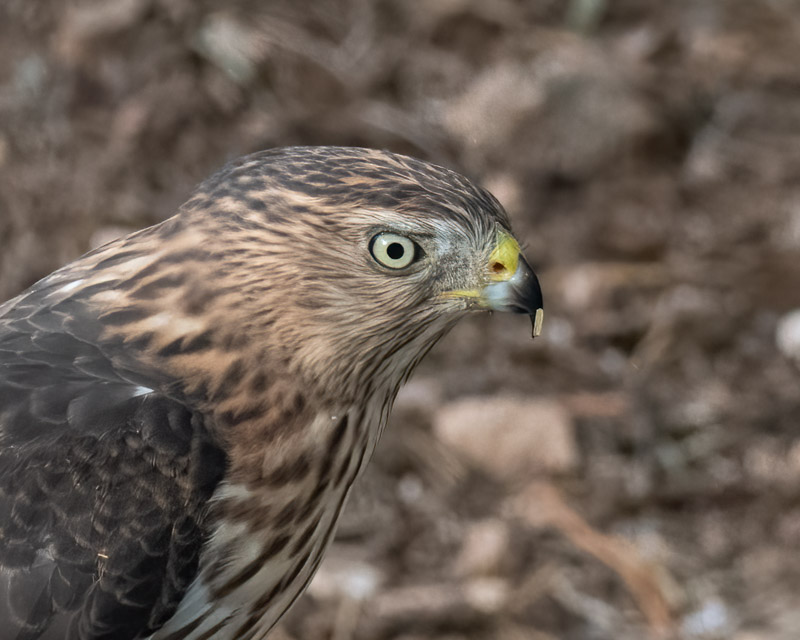
The Cooper’s Hawk resumed drinking. Hawks don’t have lips so cannot easily create a swallowing reflex in its mouth like mammals can. Instead, water is scooped into the hawk’s mouth and then drained back into the esophagus by lifting the head and neck back. https://www.birdnote.org/listen/shows/how-birds-drink
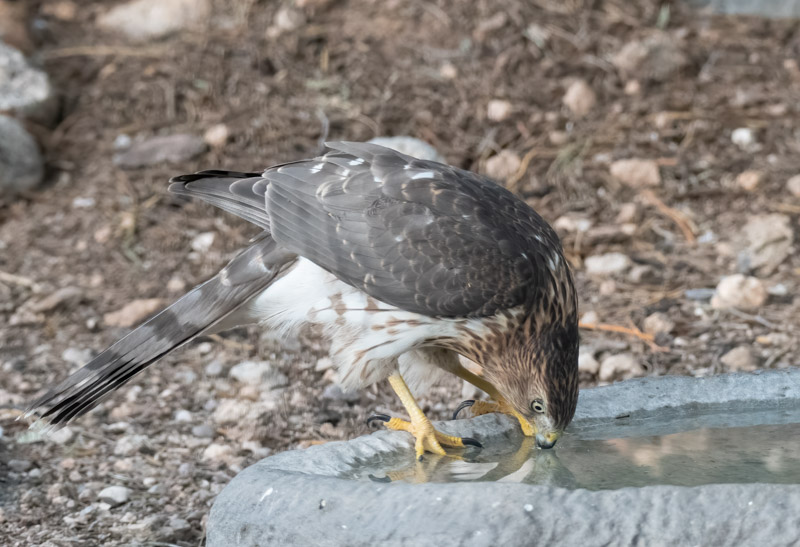
First the scoop in the photo above, and then the Cooper’s Hawk raises its head up to let the water dribble down its throat.
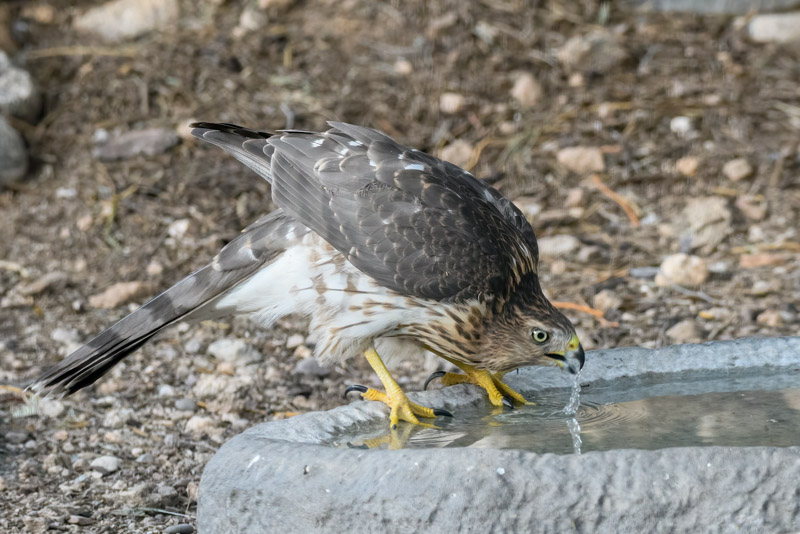
After its thirst is quenched, the Cooper’s Hawk scratched its face and then lowered its foot and talons slowly. It’s almost as if the bird got lost in thought and paused.
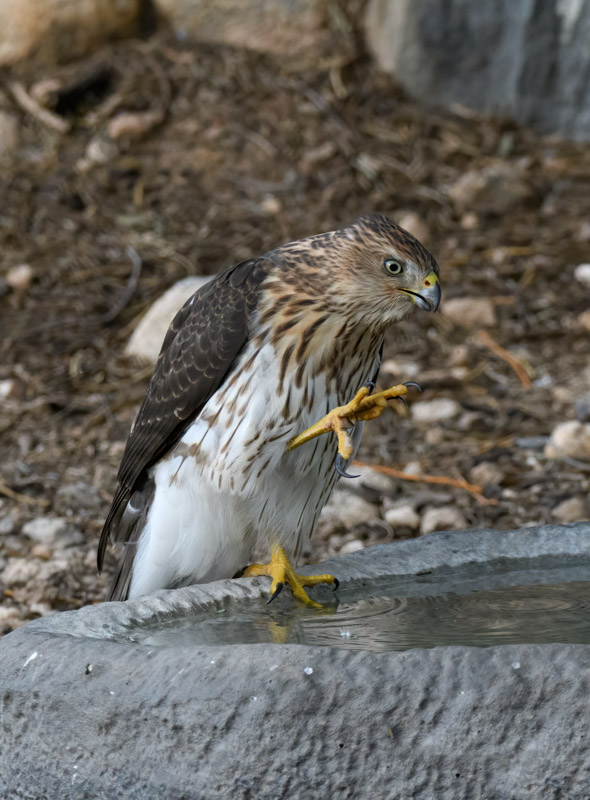
It looks around again, and then flies off.
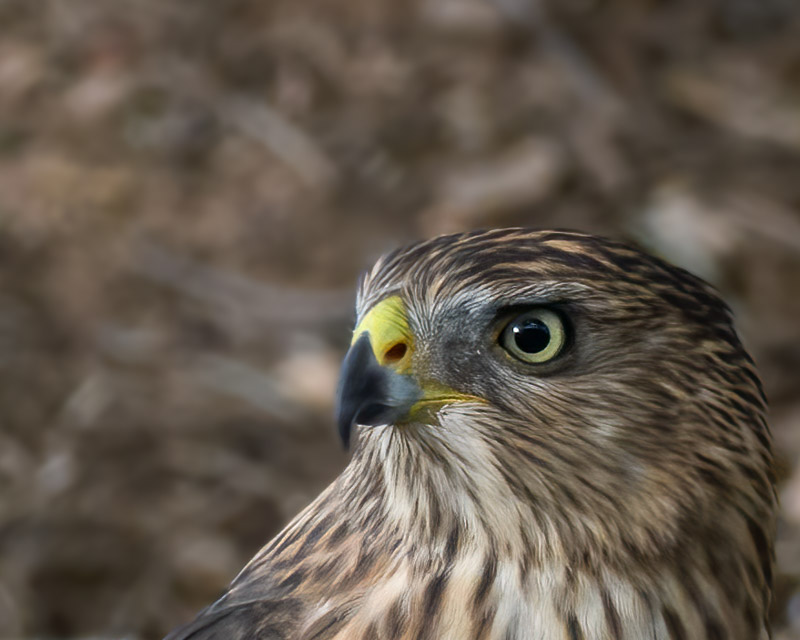
If you live in Tucson, you probably have a neighborhood Cooper’s Hawk family. Enjoy catching glimpses of this amazing raptor.
A few Cooper’s Hawk facts:
- Cooper’s Hawks are good sized birds ranging from a foot to a foot-and-a-half long (bill to end of their tail). Females are larger than males and may weigh up to a pound and a half.
- Cooper’s Hawks primary food is other birds along with small mammals (rodents or ground squirrels). https://www.birdnote.org/listen/shows/sprinting-coopers-hawks
- Cooper’s Hawks are birds of wooded areas. Their body shape shows where they live and how they hunt: short wings give them burst of speed and the long tail helps with maneuverability. They can chase their prey through, around and in-between the sprawling branches, twigs and vegetation. https://www.birdnote.org/listen/shows/urban-coopers-hawks
- Cooper’s Hawks have adapted well to urban life where there is great habitat (many big trees), permanent water (birdbaths), and plenty of good prey (songbirds and doves).
- For one more story on Cooper’s Hawks, learn how City Cooper’s Hawks compare to Country Cooper’s Hawks: https://www.birdnote.org/listen/shows/city-hawks-versus-country-hawks
